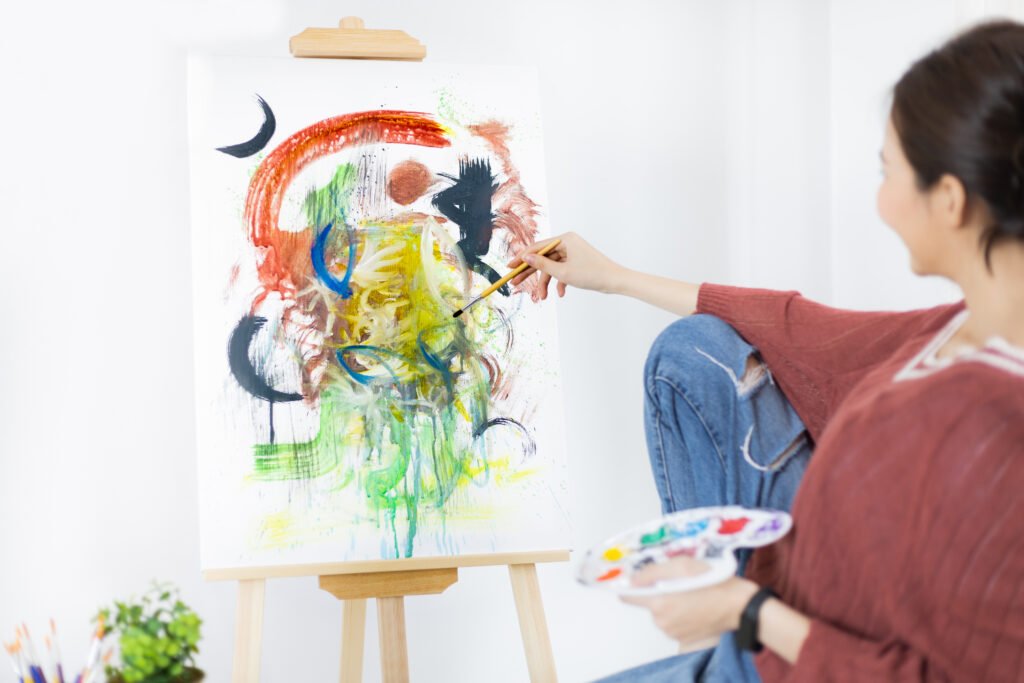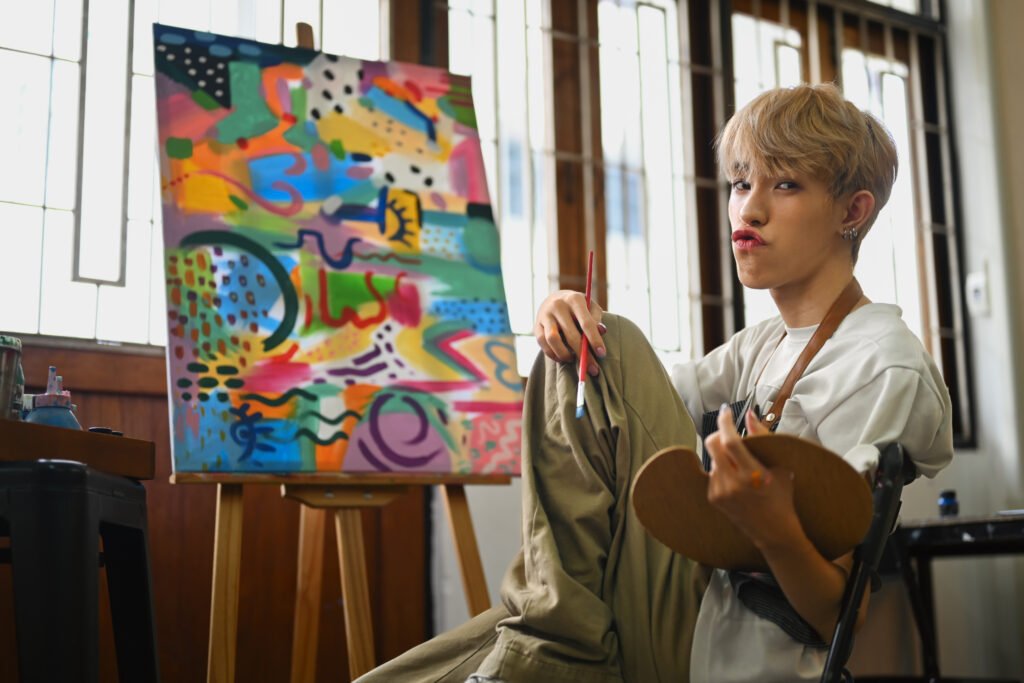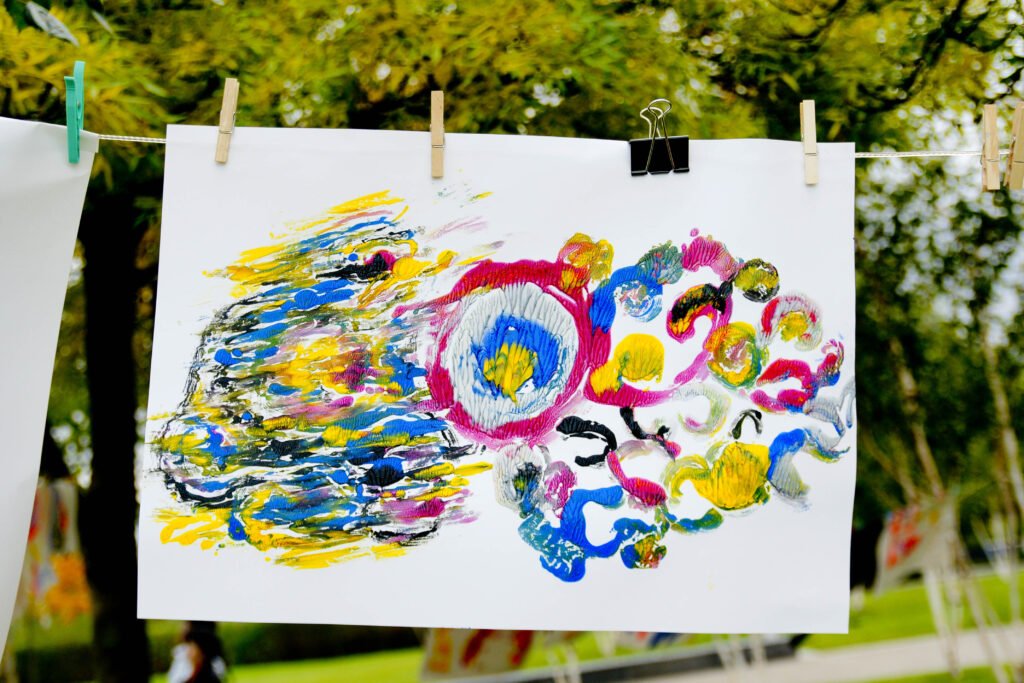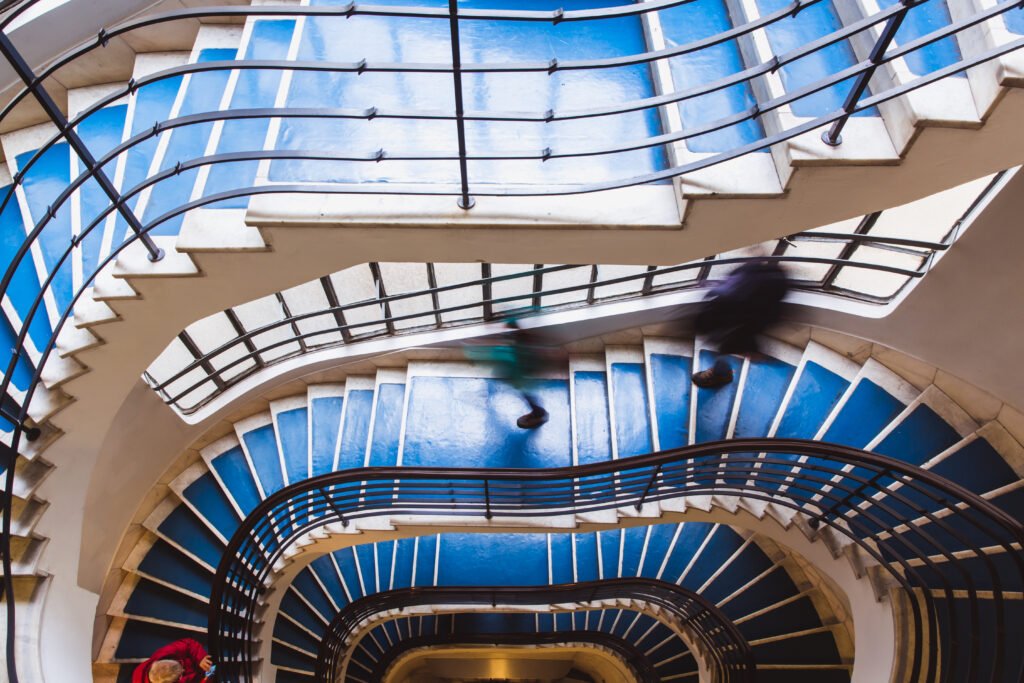Abstract art in the 21st century has expanded its horizons through technological influences, global cultural dialogues, and reinterpretations of past masters. Far from being a mere decorative aesthetic, abstract art has become a fertile ground for experimentation and critical reflection, following today’s social, political, and digital transformations.
With the growing demand to buy abstract art online, artists and galleries have had to adapt both their language and their strategy. In this evolving context, innovative trends have emerged that not only redefine abstract art but also expand its reach across different audiences and spaces. Understanding these trends is essential for those looking to invest in art or to enhance their spaces with contemporary abstract art.
Digital Hybridism and Artificial Intelligence in Abstract Art
One of the most impactful movements in 21st-century abstract art is its convergence with emerging technologies. Artists like Refik Anadol have used artificial intelligence algorithms to create visual compositions that reinterpret the core of abstraction using sensory data, generating immersive and constantly evolving visual experiences.

According to the study The Impact of AI on Visual Arts, conducted by the University of Oxford and published in 2022, artificial intelligence has significantly expanded the creative potential of contemporary artists by automating patterns and generating new chromatic, textural, and formal combinations. Abstract art, in particular, benefits from these tools, as it does not depend on figurative representation to be appreciated, making it ideal for digital experimentation.
Furthermore, this new form of digital artwork has transformed the sale of abstract art on online platforms. Digitally created pieces can be sold as unique, certified files, becoming collectible assets of high aesthetic and financial value. This shift has placed digital marketplaces among the best places to buy art today, especially for those seeking innovation and exclusivity.
Global Reach and Cultural Reinterpretation of Abstraction
21st-century abstract art is becoming more international. Artists from across the globe use their local cultures. They incorporate these elements into abstract forms. Their works break away from Eurocentric dominance.
American researcher Amelia Jones highlights this point. She wrote about it in her 2012 book, Seeing Differently. We must acknowledge multiple artistic voices. This is essential to understand contemporary art. Many global artists are developing their own styles. This includes artists from Africa, Latin America, and Asia. They blend tradition with modernity. They also mix local color with a universal language.
A 2023 Harvard University report revealed a key fact. It was in the study Cultural Diversity in Contemporary Abstraction. Over 45% of art sold on international platforms was made by non-Western artists. This decentralization signals a more inclusive market. It is also a more conscious art market. It broadens the possibilities for buyers. They can find abstract art from diverse perspectives.
In this way, abstract art in the 21st century evolves not only in technique but also in meaning. It reflects a hyperconnected world where individual expression merges with cultural heritage and the opportunities provided by technology. Whether for investment, decoration, or contemplation, buying abstract art today also means embracing these multiple dimensions.



